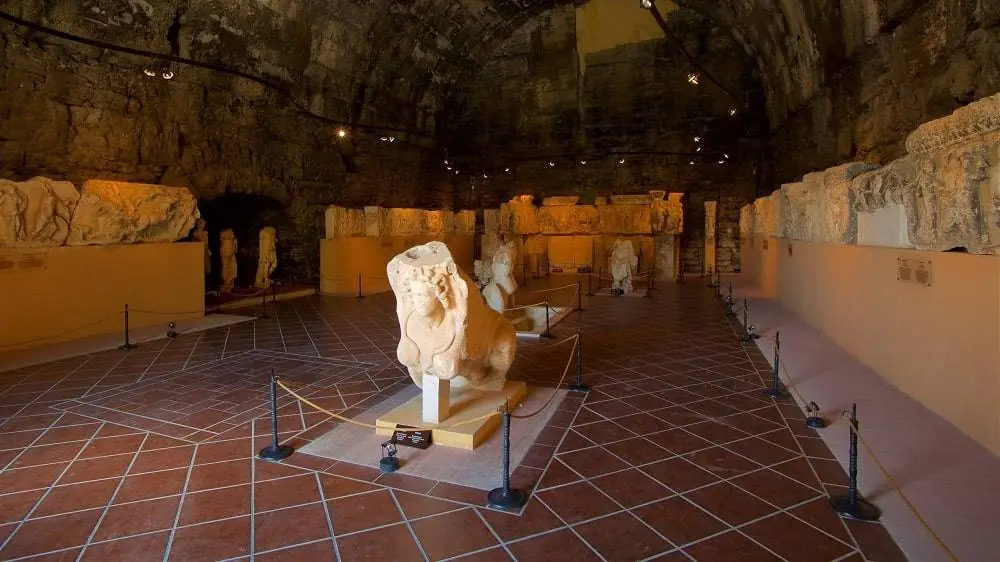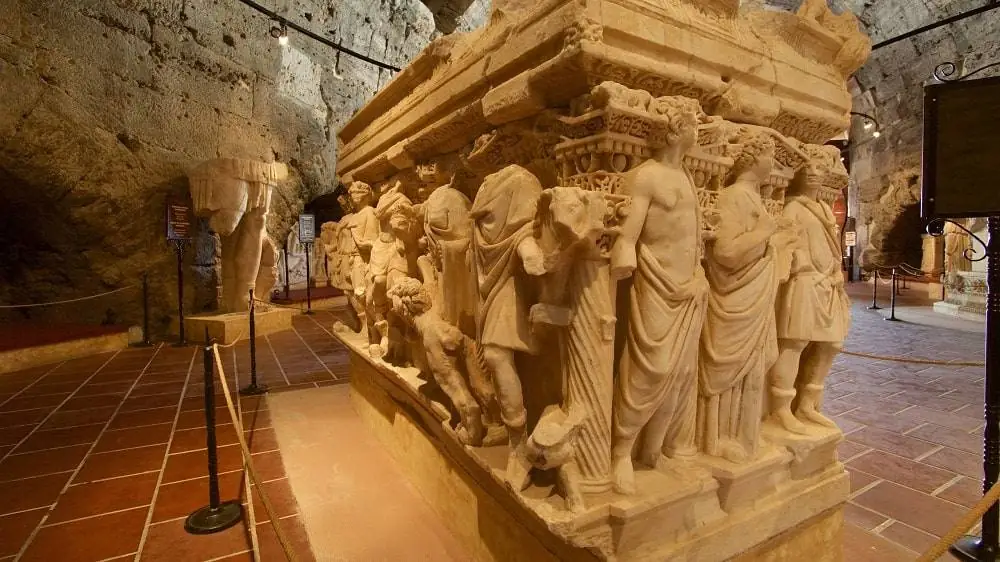The archaeology exhibit is one of the more fascinating features of the larger Archaeological Museum of Hierapolis. The museum, which is housed within the Central Roman Baths’ restored ruins, provides a variety of artefacts discovered on the property and in the neighbourhood. Just before you get to the Antique Pool and across from the travertine ponds with white cliffs is where you’ll find the museum.

In the Ancient City of Hierapolis, on a 14,000 m2 plot of land, is the Archaeological Museum of Hierapolis. It is a group of buildings that includes a library, a gym, and an ancient Roman bath. The Hierapolis Southern Bath (Great Bath Building) was built between the eras of Hadrian (117–138 A.D.) and Severius. It is situated in the southwest of the city, near the entrance to the travertine waterways. (2nd century A.D) The sediments accumulated by the water creating Pamukkale’s white travertines raised the floor of the Roman Bath by 5 metres after the old city was abandoned.
The Hierapolis Archeology Museum was inaugurated on February 1, 1984, as a result of the restoration work done on the Roman Bath Structure at the Hierapolis Archaeological Site in the 1970s. It houses artefacts recovered from the Hierapolis Excavations and brought from other ruins.
♦ 4 Days Turkey Tour – Cappadocia Ephesus Pamukkale Tour

The Legend of Marsyas
According to legend, Marsyas has the audacity to compete in a musical competition against God Apollo. Apollo won the competition by producing the finest music, beating Marsyas. Marsyas’ flesh will be flayed as punishment for his audacity in competing in a music competition with God Apollo. For this task, a Scythian is at your disposal.
Hall of Sarcophagi and Statues
The majority of the items were taken from our other ruins and are artefacts from the excavations at Hierapolis and Laodikeia. The artefacts are described as the most exquisite artistic examples of the Roman Period. They include reliefs of gladiator fights and bull fights that our directorate discovered during excavations in Tripolis Street of the Ancient City of Hierapolis and sarcophagi that were discovered during the rescue excavations in the Ancient City of Laodikeia.

